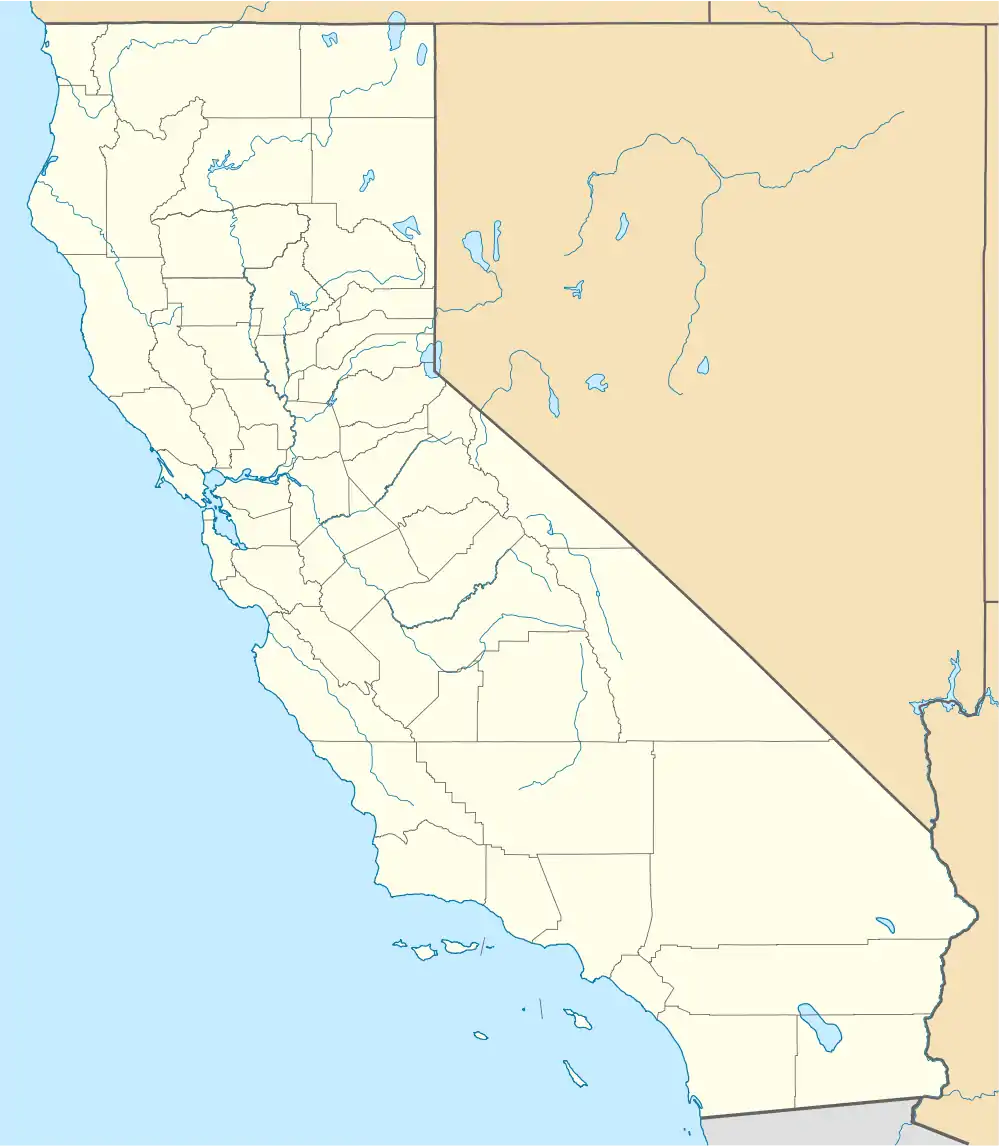San Juan Bautista Plaza Historic District | |
.jpg.webp) Mission San Juan Bautista in 1934 | |
  | |
| Location | 2211 Garden Road, San Juan Bautista, California |
|---|---|
| Coordinates | 36°50′44.02″N 121°32′4.4″W / 36.8455611°N 121.534556°W |
| Area | 6 acres (2.4 ha) |
| Built | 1797 |
| Architectural style | Colonial |
| NRHP reference No. | 69000038 |
| Significant dates | |
| Added to NRHP | December 8, 1969[1] |
| Designated NHLD | April 15, 1970[2] |
San Juan Bautista State Historic Park is a California state park encompassing the historic center of San Juan Bautista, California, United States. It preserves a significant concentration of buildings dating to California's period of Spanish and Mexican control. It includes the Mission San Juan Bautista, the Jose Castro House, and several other buildings facing the historic plaza. It became a state park in 1933[3] and was declared a National Historic Landmark in 1970.[2][4] It is also a site on the Juan Bautista de Anza National Historic Trail.
History and features
Mission San Juan Bautista was founded in 1797, as the 15th Spanish mission in what is now California. It was well sited for its intended purpose, the conversion of area Native Americans to Roman Catholicism, and was highly successful. The present mission church, still an active Catholic parish, was built in 1803–12, and is one of the largest of California's mission churches. Across the plaza from the mission is the Plaza Hotel, which was originally built in 1814 as a barracks for Spanish soldiers. Its second story was added in 1858, giving it a Monterey Colonial flavor.[4]
Following the independence of Mexico, the Spanish missions were secularized in 1833, and the village around the mission became a pueblo. On the west side of the plaza stands the adobe of José Antonio Castro, one of the most important figures in California's Mexican period between 1835 and 1846. Built 1839–41, it is architecturally an important example of the Monterey Colonial style, and now functions as a museum. Also nearby is the Juan de Anza House, an adobe whose construction predates the rise of the Monterey Colonial style.[4]
See also
References
- ↑ "National Register Information System". National Register of Historic Places. National Park Service. January 23, 2007.
- 1 2 "San Juan Bautista Plaza Historic District". National Historic Landmark summary listing. National Park Service. Retrieved November 18, 2007.
- ↑ "Archived copy" (PDF). Archived from the original (PDF) on February 24, 2011. Retrieved February 22, 2011.
{{cite web}}: CS1 maint: archived copy as title (link) - 1 2 3 Charles W. Snell (November 12, 1963). "National Survey of Historic Sites and Buildings: San Juan Bautista Pueblo (and Plaza)" (pdf). National Park Service.
{{cite journal}}: Cite journal requires|journal=(help) and Accompanying 3 photos, exterior, from 1968. (438 KB)
External links
- San Juan Bautista State Historic Park
- Early History of the California Coast, a National Park Service Discover Our Shared Heritage Travel Itinerary
The following buildings in the district are documented in the Historic American Buildings Survey:
- HABS No. CA-1501, "Zanetta House, San Juan Bautista Residence", 41 photos, 6 color transparencies, 5 photo caption pages
- HABS No. CA-1954, "Plaza Hotel, Second Street, San Juan Bautista Plaza", 1 photo, 11 measured drawings, 1 photo caption page
- HABS No. CA-38-4, "Mission San Juan Bautista, Second Street, San Juan Bautista Plaza", 4 photos, 39 measured drawings, 2 data pages
- HABS No. CA-38-4-A, "Mission San Juan Bautista, Church", 7 photos
- HABS No. CA-38-4-B, "Mission San Juan Bautista, Monastery", 8 photos
- HABS No. CA-38-4-C, "Mission San Juan Bautista, Garden", 1 photo
- HABS No. CA-38-4-D, "Mission San Juan Bautista, Rectory", 1 photo
- Historic American Landscapes Survey (HALS) No. CA-84, "Mission San Juan Bautista, Roughly bounded by Second Street, driveway and unpaved road in line with Polk Street, San Juan Creek, and Franklin Street", 10 data pages